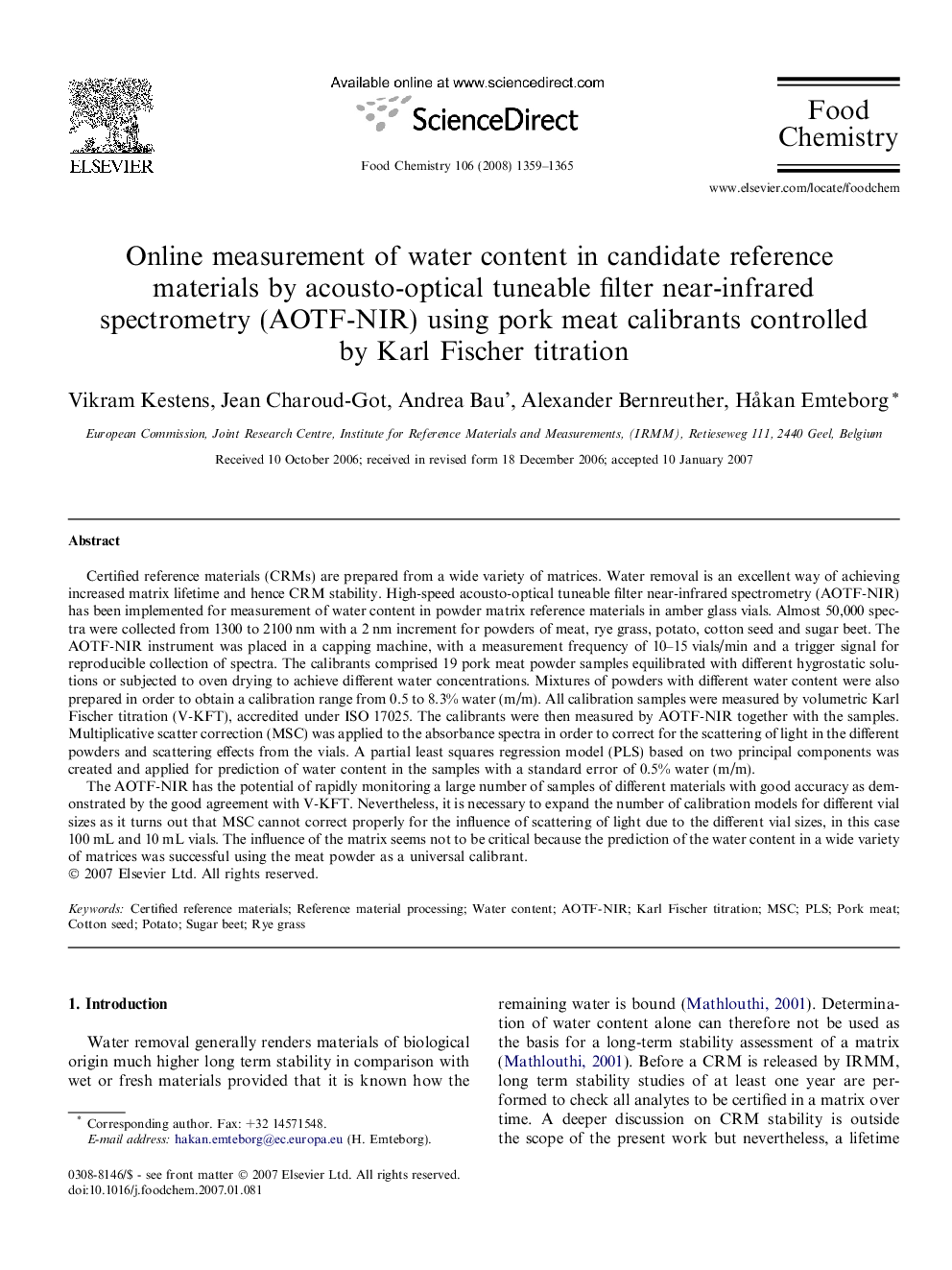| Article ID | Journal | Published Year | Pages | File Type |
|---|---|---|---|---|
| 1187428 | Food Chemistry | 2008 | 7 Pages |
Certified reference materials (CRMs) are prepared from a wide variety of matrices. Water removal is an excellent way of achieving increased matrix lifetime and hence CRM stability. High-speed acousto-optical tuneable filter near-infrared spectrometry (AOTF-NIR) has been implemented for measurement of water content in powder matrix reference materials in amber glass vials. Almost 50,000 spectra were collected from 1300 to 2100 nm with a 2 nm increment for powders of meat, rye grass, potato, cotton seed and sugar beet. The AOTF-NIR instrument was placed in a capping machine, with a measurement frequency of 10–15 vials/min and a trigger signal for reproducible collection of spectra. The calibrants comprised 19 pork meat powder samples equilibrated with different hygrostatic solutions or subjected to oven drying to achieve different water concentrations. Mixtures of powders with different water content were also prepared in order to obtain a calibration range from 0.5 to 8.3% water (m/m). All calibration samples were measured by volumetric Karl Fischer titration (V-KFT), accredited under ISO 17025. The calibrants were then measured by AOTF-NIR together with the samples. Multiplicative scatter correction (MSC) was applied to the absorbance spectra in order to correct for the scattering of light in the different powders and scattering effects from the vials. A partial least squares regression model (PLS) based on two principal components was created and applied for prediction of water content in the samples with a standard error of 0.5% water (m/m).The AOTF-NIR has the potential of rapidly monitoring a large number of samples of different materials with good accuracy as demonstrated by the good agreement with V-KFT. Nevertheless, it is necessary to expand the number of calibration models for different vial sizes as it turns out that MSC cannot correct properly for the influence of scattering of light due to the different vial sizes, in this case 100 mL and 10 mL vials. The influence of the matrix seems not to be critical because the prediction of the water content in a wide variety of matrices was successful using the meat powder as a universal calibrant.
